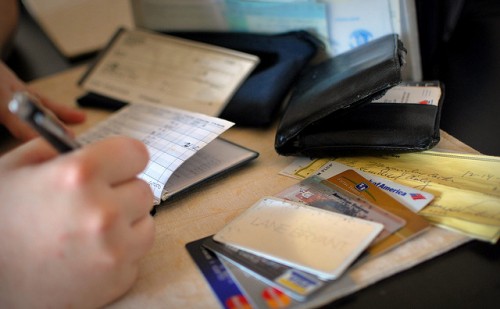Reasons Your Credit Card Debt Isn’t Decreasing
Posted by : Premraj | Posted on : Sunday, September 6, 2020

You’ve been making regular monthly payments on your credit card debt, but these efforts have barely made your balance budge. Does this situation sound familiar? Sometimes it feels like trying to bail out a sinking boat — for every bucket of water you expel, close to the same amount rushes back into the vessel, leaving you largely back where you started (albeit more exhausted than ever).
It is absolutely possible to make timely payments on your credit cards without seeing much, or any, progress toward paying off those outstanding balances.
Reasons your credit card debt isn’t decreasing despite your best efforts might include:
#1: You Pay the Minimum Amount Due
If your credit card balance makes you think “yikes,” seeing there’s a much-smaller minimum amount you can pay to keep your account in good standing may come as a relief. But paying only the minimum allows interest to keep growing. It can also extend the life cycle of your credit card balance by months — or even years.
If you are going to make minimum payments on your accounts, get a strategy. The debt avalanche method can speed up repayment by targeting accounts with high interest first. The basic premise is paying the minimum amount due on all accounts except the one with the costliest interest, toward which you’ll throw as much money as you can until it’s eradicated. Repeat this process until you’ve paid down every account.
#2: Your Payments Go Toward Covering Interest
Nearly six out of 10 credit cardholders (59 percent) carry a balance on at least one of their cards. This means there’s the potential for interest to accrue, as the only way to avoid interest is paying your balance in full every month. A major contributor to stagnant or growing credit card debt is the opportunity for debt to flourish on unpaid balances.
Given credit cards carry high average interest rates, often around 15 to 20 percent depending on the card, you can imagine how aggressively interest can compound over time — on both the original amount spent and any interest that’s since built up.
Here’s an example from The Balance of how credit card payments can easily get eaten up by interest: You carry a balance of $1,000 at 18 percent interest. You make a payment of $30, expecting your balance to drop to $970. However, your finance charge for the month will come out to about $13 — so your balance will only diminish to $983.
Figuring out how to pay more each month is the best way to work down your balance. You can also designate extra funds you send in to apply to your principal.
Another potential option is asking your credit card company to lower your interest rate — you’ll have better luck with a strong and long payment history — or transferring your balance to a new credit card with zero-percent interest for an introductory time period. Borrowers struggling to keep pace with growing interests may also want to look into debt management plans and debt relief programs to find a solution that fits their needs.
#3: Your Payments Go Toward Covering Fees
Another thing to keep an eye on is how much you’re paying in fees. Certain behaviors can help you avoid racking up fees for late payments or going over your credit limit. If your card carries an annual fee, you may be able to get it lowered or switch to using a card without this extra charge. While nearly seven out of 10 cards don’t have an annual fee, those that do charge borrowers nearly $110 per year.
#4: You’re Accumulating New Debt
Last but not least, it’s difficult — if not impossible — to squash current credit card debt if you’re making purchases that exceed the amount you can afford to pay off each month. Lifestyle changes may be in order here. A solid first step is revisiting your budget, hunting for opportunities to reduce spending across the board.
Making payments on your credit cards doesn’t necessarily guarantee your balances are decreasing — so consider these reasons and see what you can do to optimize your repayment.
 SU
SU REDDIT
REDDIT







